
Do you have a question about the Kenwood eXcelon KDC-X789 and is the answer not in the manual?
| Brand | Kenwood |
|---|---|
| Model | eXcelon KDC-X789 |
| Category | Car Receiver |
| Language | English |
Covers warnings for injury, fire, and unit damage. Includes specific usage notes.
Details on connecting CD changers, LX-bus, and lens fogging issues.
Guidance on initial setup, demo mode, and ODD D/A System features.
Instructions for cleaning the unit and its detachable faceplate terminals.
Details on DAB tuner control and the "Media Manager" PC application integration.
Information on FCC compliance, radiation exposure, and federal safety regulations.
Proper methods for handling, removing, and cleaning CDs to prevent damage.
Information on usable CDs, unplayable discs, and proper storage conditions.
Details playable AAC, MP3, WMA files, and compatible media types (CD-ROM, CD-R, CD-RW).
Explains file/folder structure, character limits, playback order, and search functions.
Explains the system enabling multiple functions via single buttons.
Details on displaying, setting, and grouping functions using the multi-function key system.
Instructions for unit power, source selection, volume adjustment, and attenuator use.
Overview of audio control functions, including basic adjustments.
How to adjust bass, treble, balance, and fader settings.
Detailed adjustment of bass, treble, and other audio parameters for KDC-X789.
Adjusting rear volume, subwoofer level, balance, and fader.
Setting up crossover networks, filters, and subwoofer phase.
Adjusting volume offset, dual zone system, and other audio setup options.
Fine-tuning system Q by setting speaker types (5/4", 6x9", OEM).
Turning the subwoofer output on or off for enhanced bass.
Adjusting crossover frequency, DTA, and position settings.
Detailed settings for filters, slopes, and subwoofer parameters.
Setting cabin, speaker types, and subwoofer parameters for optimal sound.
Adjusting equalizer bands, levels, and using preset sound modes.
Fine-tuning sound quality using system Q and frequency adjustments.
Utilizing TruBass, FOCUS, and SRS 3D for enhanced audio playback.
Temporarily bypassing DSP effects for a direct audio signal.
Storing and recalling custom sound field control values.
Attaching custom titles to radio stations or CDs.
Detaching the faceplate to prevent theft and storing it safely.
Adjusting the angle of the detachable faceplate for better viewing.
Changing between different display modes (Type A, B, C, D, E).
Switching between graphic displays and spectrum analyzer visualizers.
Selecting custom wallpapers for specific display modes.
Selecting text information to display from tuner, audio files, and other sources.
Customizing text display parts for Display Types C and D.
Information displayed in the upper text area for tuner, audio, and standby modes.
Information displayed in the middle text area for tuner, audio, and standby modes.
Information displayed in the lower text area for tuner, audio, and standby modes.
Changing the font color for text displays in specific modes.
Customizing the G-Analyzer display settings for gravity and acceleration data.
How the audio system mutes automatically for incoming calls.
Steps for selecting stations and tuning bands (FM1, FM2, FM3).
Using auto seek, preset seek, manual tuning, and direct access tuning.
Storing and recalling favorite radio stations using preset buttons.
Automatically saving strong reception stations into memory.
Scrolling through displayed radio text information.
Searching for stations based on program type categories.
Storing and recalling specific program types for quick access.
Assigning program types to stations that lack PTY data.
Instructions for opening the panel, inserting discs, and basic playback.
Operating connected CD changers and MD changers.
Methods for searching specific tracks, files, or discs.
Repeating tracks, discs, or folders during playback.
Using scan play to preview tracks and random play for varied sequences.
Playing audio files randomly from the entire disc.
Navigating and selecting specific folders for audio file playback.
Arranging songs by genre, artist, or album.
Searching for songs by initial letter and scrolling text information.
Switching to SIRIUS, selecting channels, and choosing seek modes.
Manually tuning channels and using preset memory for SIRIUS.
Searching for channels based on category and specific channel numbers.
Selecting preset bands and storing channels in memory.
Automatically checking receivable channels for a set duration.
Scrolling through displayed channel names and other text items.
Selecting HD Radio source and tuning stations by band and frequency.
Basic operation for accessing and navigating menu items.
How to select menu items and set their values (e.g., Clock, Beep, Security).
Setting a security code and enabling/disabling touch sensor tones.
Manually adjusting the unit's clock and date settings.
Setting the date format and adjusting display dimming based on vehicle lights.
Synchronizing clock with RDS data and switching between rear/subwoofer preouts.
Turning the built-in amplifier on or off for preout quality.
Setting G-Counter levels and resetting G-Meter/G-Counter values.
Configuring front and rear channel sound for dual zone audio.
Adjusting bass boost levels and frequency offsets for external amplifiers.
Controlling connected LX AMP and enabling automatic traffic information.
Setting the receive mode for HD Radio (Auto, Digital, Analog).
Displaying the electronic serial number for SIRIUS service.
Customizing auxiliary input display and naming stations/discs.
Setting how text information scrolls on the display.
Configuring the built-in auxiliary input function.
Forcing CD playback for special format discs.
Downloading movies and wallpapers for unit display.
Managing voice announcements, firmware versions, and unique IDs for ACDrive discs.
Registering and managing custom audio presets for sound control.
Recalling previously registered audio preset settings.
Enabling or disabling the unit's demonstration mode.
Installing batteries and using core remote buttons (VOL, SRC, ATT, *).
Using AUD and VOL buttons for audio adjustments and 2-ZONE system.
Using remote buttons for FM/AM bands, tuning, presets, and direct access.
Operating disc playback, track search, and file navigation with the remote.
Using the remote for SIRIUS band selection, channel search, and presets.
Using the remote for HD Radio band selection and tuning.
Listing of accessories provided with the unit.
Detailed steps for safely installing the unit in the vehicle.
Diagram and instructions for connecting speakers, power, and input/output wires.
Mounting instructions using metal straps and screws for general vehicles.
Specific mounting procedures for Toyota and Nissan vehicles.
How to securely attach the faceplate using provided screws.
Steps to remove the front trim or hard rubber frame.
How to disconnect and remove the main unit from the dashboard.
Solutions for issues like no power, unswitchable sources, or erased memory.
Troubleshooting low volume, distorted sound, or no audio output.
Resolving poor radio reception, frequency entry errors, or disc playback problems.
Fixing issues with direct search, track search, or disc insertion.
Solutions for unsupported audio files or poor HD Radio reception.
Interpreting messages like "Eject", "No Disc", "TOC Error", and "Error 77".
Addressing issues like unsupported files, download errors, or writing failures.
Troubleshooting hold errors, demo mode, and copy protection issues.
Detailed specifications for FM/AM tuners, CD player, and auxiliary input.
Specifications for audio output, tone controls, and general unit parameters.


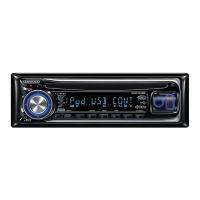
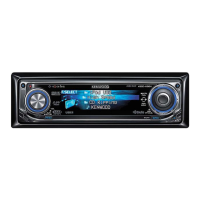

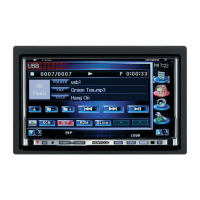

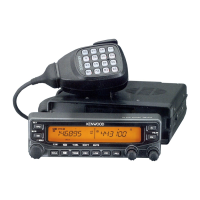
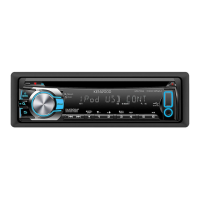
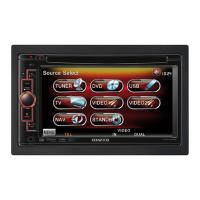
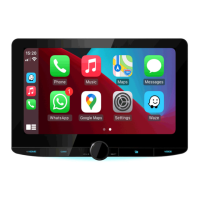

